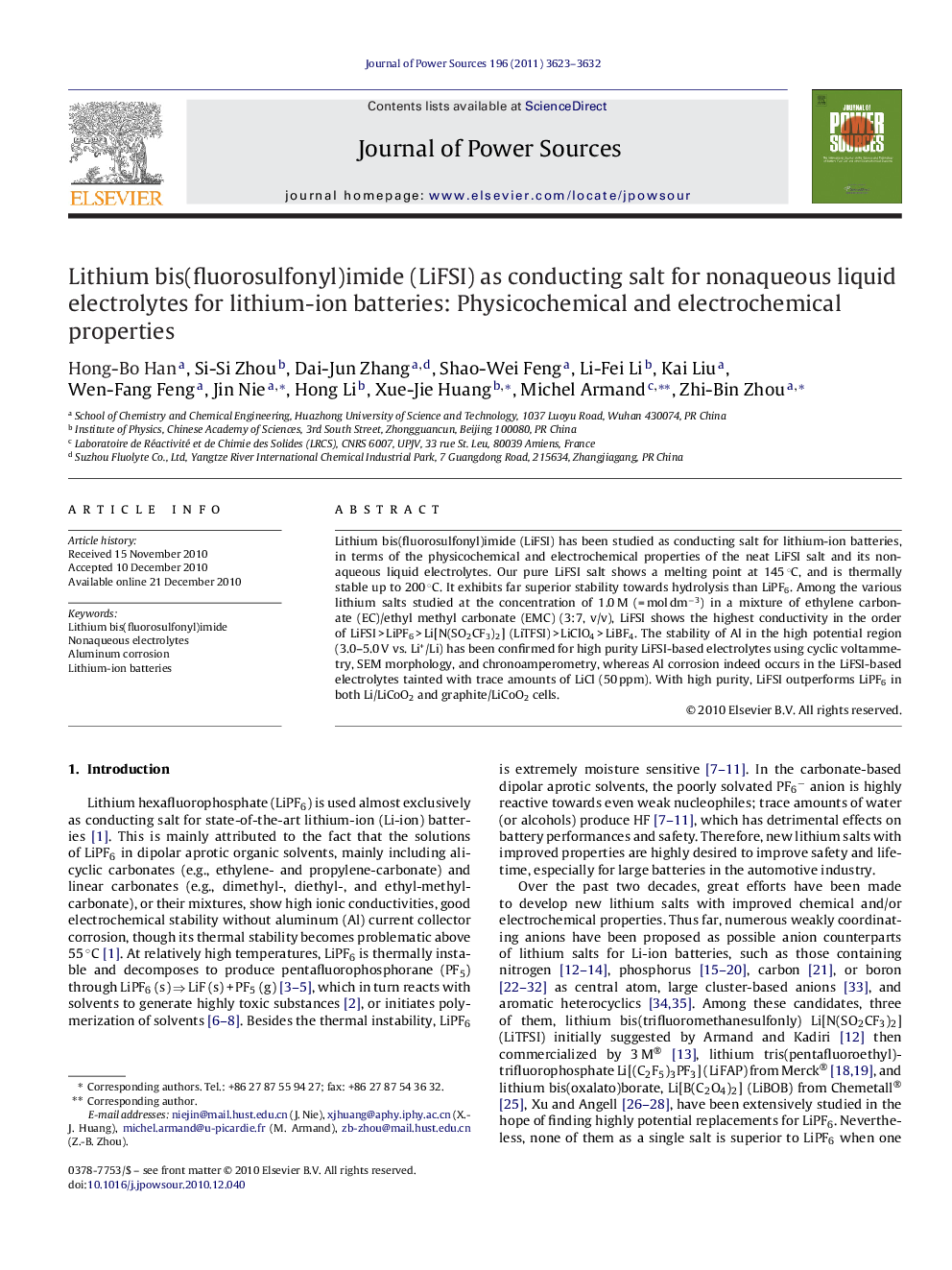| کد مقاله | کد نشریه | سال انتشار | مقاله انگلیسی | نسخه تمام متن |
|---|---|---|---|---|
| 1288623 | 973270 | 2011 | 10 صفحه PDF | دانلود رایگان |

Lithium bis(fluorosulfonyl)imide (LiFSI) has been studied as conducting salt for lithium-ion batteries, in terms of the physicochemical and electrochemical properties of the neat LiFSI salt and its nonaqueous liquid electrolytes. Our pure LiFSI salt shows a melting point at 145 °C, and is thermally stable up to 200 °C. It exhibits far superior stability towards hydrolysis than LiPF6. Among the various lithium salts studied at the concentration of 1.0 M (= mol dm−3) in a mixture of ethylene carbonate (EC)/ethyl methyl carbonate (EMC) (3:7, v/v), LiFSI shows the highest conductivity in the order of LiFSI > LiPF6 > Li[N(SO2CF3)2] (LiTFSI) > LiClO4 > LiBF4. The stability of Al in the high potential region (3.0–5.0 V vs. Li+/Li) has been confirmed for high purity LiFSI-based electrolytes using cyclic voltammetry, SEM morphology, and chronoamperometry, whereas Al corrosion indeed occurs in the LiFSI-based electrolytes tainted with trace amounts of LiCl (50 ppm). With high purity, LiFSI outperforms LiPF6 in both Li/LiCoO2 and graphite/LiCoO2 cells.
Research highlights▶ Lithium bis(fluorosulfonyl)imide (LiFSI) has been studied as conducting salt for nonaqueous liquid electrolytes for lithium-ion batteries. ▶ Lithium bis(fluorosulfonyl)imide (LiFSI) exhibits far superior stability towards hydrolysis than lithium hexafluorophosphate (LiPF6) and does not release hydrogen fluoride (HF). ▶ Pure lithium bis(fluorosulfonyl)imide (LiFSI) does not corrode Al, and Al corrosion is induced by trace amounts of chloride (Cl−) impurities present in it. ▶ Lithium bis(fluorosulfonyl)imide (LiFSI) outperforms lithium hexafluorophosphate (LiPF6) for lithium-ion batteries.
Journal: Journal of Power Sources - Volume 196, Issue 7, 1 April 2011, Pages 3623–3632